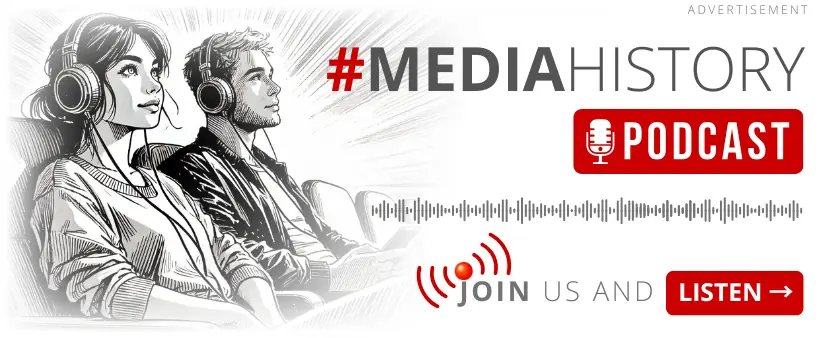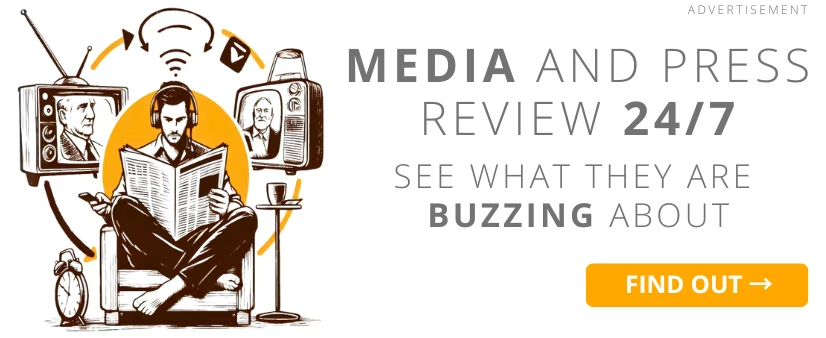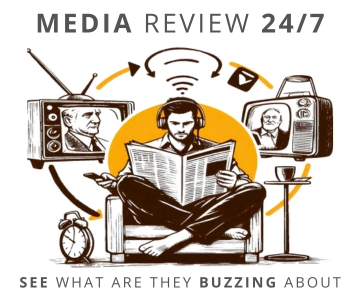For readers, price is also a key factor. E-newspapers are generally 15-20% cheaper than their paper counterparts, with some titles even sold at half the price. These benefits prove effective – the three major players in the digital press market, eGazety, Nexto, and e-Kiosk, now sell around 270,000 copies monthly. As confirmed by Money.pl, this figure is double that of last year.
These numbers may be impressive, but it’s worth noting that in February alone, 120 million paper newspapers were sold.
***
The e-edition is an electronically distributed version of at least one variant of a controlled press title, containing the same editorial and advertising content in form and substance as the print version. Total compliance of the e-edition with the print version does not apply to inserts and gadgets. (...) Editorial content in the electronic version may be further expanded, and ads may be adapted to leverage the capabilities of the electronic medium.
excerpt from the regulations of the Press Distribution Control Association
***
- This is an expansion of reaching the end user, another sales and distribution channel, explains Piotr Zmelonek, editorial director of Polityka. - Some readers appreciate the ability to read or browse Polityka on Tuesday evening instead of waiting for it at the kiosk on Wednesday morning. Others prefer the electronic format due to habits or work requirements.
Poles working abroad also contribute to the success of digital press, as emphasized by publishers and distributors. E-editions allow them to read titles they can’t get in traditional format.
Who is the E-Reader?
Surveys conducted in February by Value Media indicate that well-educated people over forty are the most avid readers of digital newspapers. They generally hold high positions and are experienced internet users. E-distributors confirm these findings.
E-newspaper files are available in several formats. Each Polish distributor uses an independent format based on PDF. Users need to download a reader to their computer to browse the downloaded newspaper. A drawback is that these programs only support Windows users. Distributors - eGazety and e-Kiosk - are working on readers for other operating systems. Nexto is finalizing tests for an online reader that should work on any computer.
- A typical e-reader is a man aged 35 and up, with a higher education, living in a large city - says Piotr Kubiszewski from e-Kiosk in an interview with Money.pl.
Nexto reaches younger readers. Here, the most frequent e-magazine buyers are people aged 25-34, with 72% of them being men living in big cities (52%). - They tend to be well-off, with 24% earning between 2,500 and 5,000 PLN net monthly - says Bartłomiej Roszkowski, head of Nexto. - Almost 100% of our users use the internet daily.
- We classify users as individual or institutional. Individual users are frequent readers or professionals looking for a convenient way to access specific content - assesses Katarzyna Głodek, marketing specialist at eGazety. - Our system is also used by institutions for whom speed and reliability in accessing information is crucial.
What’s Being Read?
The most popular titles in digital format are opinion weeklies. Polityka, Newsweek, and Wprost are among the top picks across all e-distributors. The second group of titles includes trade and specialist publications.
- The top-selling category in eGazety is business-related press. The best-seller is Gazeta Giełdy Parkiet, with around 20% of its total circulation sold in e-format, says Katarzyna Głodek.
IT-related titles, such as PC World Komputer, Magazyn INTERNET, and NetWorld, are popular, likely due to the distribution channel. Other sought-after titles include specialized magazines like Nowa Technika Wojskowa, Pomysł na dom, Kulturystyka i Fitness, and Film. Interestingly, the market looks very different when viewed through the lens of data from the Press Distribution Control Association (ZKDP), which monitors e-newspapers since 2003. Over time, the largest sales have been recorded in regional dailies.
The differences are marked, primarily because most publishers, even the biggest players in e-publishing, don’t submit their titles for verification. This is partly due to the Association`s regulations, which are conservative regarding digital press. For ZKDP to recognize a copy as sold, the e-edition must be circulated in the same period as the printed version. This means that archived issues can`t count toward sales statistics, even though e-readers often buy back issues of their favorite magazines.
***
According to industry representatives, publishers fully leveraging the e-edition potential include Axel Springer, the IDG group, and Infor. Each of these publishers, in addition to using digital distribution platforms, also sells its titles independently.
***
- For hobbyist magazines, which are often archived, back-issue sales can sometimes reach 50% of all sold copies, says Piotr Kubiszewski from e-Kiosk. - For opinion weeklies, back-issue sales vary between 1% and 15%.
Unlike print newspapers, their digital counterparts are more often sold via subscription. Almost all titles are sold in this form by eGazety. Subscription makes up 40% of sales at Nexto and nearly 17% at e-Kiosk.
Dynamic Market
Digital newspaper kiosks are growing dynamically. In the past year, they’ve expanded their offerings, improved sales, and started competing in the distribution market, supplying press to institutions.
***
American journalism professor Philip Meyer calculated in his book *The Vanishing Newspaper: Saving Journalism in the Information Age* that the last reader of a printed newspaper will disappear in September 2043.
source: digitaldeliverance.com
***

- In early 2007, around 20,000-30,000 copies were delivered to readers monthly; now, it’s over 50,000 copies per month, says Nexto`s Bartłomiej Roszkowski, showing the growth. His company also develops a partner network that allows any internet user to sell Nexto titles on their site. In April, Nexto already had nearly 8,000 such partners.
Piotr Kubiszewski from e-Kiosk is also pleased with the rapid growth. e-Kiosk started on July 17, 2006, with 10 titles, growing to 30 titles by December, and to 80 titles by the end of March. - In March, we launched two daily newspapers, which significantly increase the number of distributed publications due to their frequency, highlights Kubiszewski.
For eGazety, the greatest achievement is convincing publishers like Agora, Bonnier Business, Presspublica, and Infor to join its platform. - Supplying press to institutions and large corporations is also a success, adds Katarzyna Głodek.
The approach of publishers is also changing: "We no longer see e-press as a gimmick. It’s just as good a distribution channel as the traditional one, especially as it brings additional revenue," admits Piotr Zmelonek. - Last year, we sold an average of 393 e-editions of Polityka weekly. Compared to print subscriptions, it’s not much, but this is the part of the market that could grow dynamically in the future.
Industry Forecasts
In the near future, e-press won’t replace printed editions. E-editions are still less convenient to use compared to print. Digital newspapers are hard to read on the train, bus, or tram. There are also habits to consider:
- People who read Polityka appreciate the tangible experience of print. Besides, there’s too much risk of soaking your laptop in the bathtub, jokes Piotr Zmelonek.
- Print publishers need not worry. Digital press will be an addition, not a replacement, predicts Piotr Kubiszewski. - Paper is more comfortable to read; digital versions are easier to archive.
The Largest Polish E-Edition Distributors:
| eGazety (www.egazety.pl) | 111 titles available |
| Nexto (www.nexto.pl) | 93 titles |
| e-Kiosk (www.e-kiosk.pl) | 80 titles |
source: Money.pl, distributor data
Katarzyna Głodek from eGazety believes that within a few years, electronic-format press will become a market standard: - E-editions will be omnipresent and increasingly aligned with reader expectations. Soon, you will be able to read your favorite newspaper on all available portable devices and, in a few years, even on e-paper, she estimates. Therefore, the company will invest in mobile device solutions.
***
E-paper is a technology for displaying digital content on a thin, flexible screen. The text is visible in reflected light, reducing eye strain. Current drawbacks include the lack of color and a price reaching several hundred dollars.
***
Bartłomiej Roszkowski and Piotr Kubiszewski believe that portable e-readers won’t reverse the trend. They are better suited to reading e-books than newspapers. True revolution could only come with e-paper – if it becomes affordable: - A breakthrough might occur once low-cost devices for reading e-newspapers, offering color, become available, says Kubiszewski.
According to Bartłomiej Roszkowski from Nexto, the future of the industry also includes free subscriptions. This will benefit publishers. E-editions can provide advertisements precisely tailored to the interests of individual readers, which greatly increases the chance of selling promoted products. Advertisers will surely pay well for this opportunity.
Report published on April 22, 2008, on the Money.pl portal
Enhanced version with charts and tables available on the portal
Published with the permission of the editorial management
COMMERCIAL BREAK
New articles in section Media industry
Journalism in the age of AI. Why people prefer humans over machines
Krzysztof Fiedorek
Only 12% of people accept news created solely by AI, while 62% prefer those written by humans. At the same time, only 19% notice labels indicating the use of artificial intelligence, while younger audiences ask AI to explain the content to them. These are the findings of the Reuters Institute report on artificial intelligence in media.
Why do we believe fakes? Science reveals the psychology of virals
KFi
Why do emotions grab more attention than evidence, and why can a fake authority overshadow scientific data? Researchers from Warsaw University of Technology, Jagiellonian University, and SWPS University in Poland sought the answers. Here are their findings.
Investigative journalism in Europe. Newsrooms face pressure
KFi, Newseria
Media and political representatives point to the difficult situation of investigative journalism in Europe. Newsrooms are reluctant to invest in this segment due to high costs and the large amount of time and effort required. Most of all, however, they fear legal proceedings.
See articles on a similar topic:
Fake News in Poland. Challenges in Assessing Information Credibility
RINF
One in four information consumers relies on sources where verifying credibility is a significant challenge. Fake news remains a major issue, as indicated by 77% of respondents, with 51% admitting they struggle to discern truth from falsehood, according to Deloitte's *Digital Consumer Trends 2021* report.
Dead internet theory is a fact. Bots now outnumber people online
Krzysztof Fiedorek
Already 51% of global internet traffic is generated by bots, not people. As many as two-thirds of accounts on X are likely bots, and on review platforms, three out of ten reviews weren't written by a human. Do you feel something is off online? It's not paranoia. In 2025, it's a reality.
Trust in social media. Youtube beats TikTok and X
Krzysztof Fiedorek
Do we really trust social media? A new study reveals major differences in how top platforms are rated. Trust goes where there's authenticity, not just algorithms. The role of people is growing while brand influence is fading.
Repression Against Media: Committee to Protect Journalists Report for 2024
Krzysztof Fiedorek
In 2024, at least 361 journalists worldwide were imprisoned, often for exposing the truth. In China, reporters are tracked using advanced facial recognition systems, in Israel, Palestinian journalists are jailed without trial, and in Myanmar, journalist Shin Daewe received a life sentence for... a drone.





























